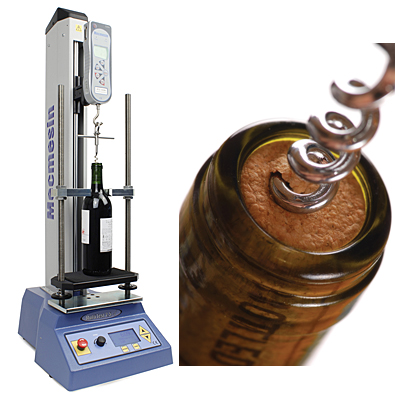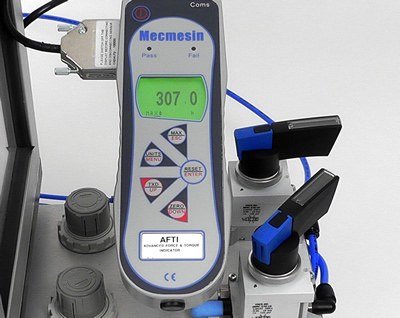Error message
Warning: file_get_contents(http://ipinfo.io/18.189.193.33/country): failed to open stream: HTTP request failed! HTTP/1.0 429 Too Many Requests in include_once() (line 656 of /home/closuretesting/public_html/sites/default/settings.php).ISO 9727 Cylindrical stoppers of natural cork – physical tests – Part 5: Determination of extraction force
Measuring the extraction force of cylindrical corks from bottles
This overview is intended to provide a basic understanding of the test procedure and suitable equipment to meet the standard. Please refer to the latest official ISO 9729 standard for more detailed information.
This part of the ISO 9727 standard concerns the force needed to extract a cylindrical cork from a wine bottle. The corks are fitted into filled wine bottles then stored horizontally for eight days, after which the maximum extraction force is measured.
Test Summary
This part of the ISO 9727 standard concerns the force needed to extract a cylindrical cork from a wine bottle. Samples of cork stoppers are selected in accordance with ISO 2859-1, ISO 3951 and ISO 4707. After conditioning for 24 hours, the corks are fitted into filled wine bottles then stored horizontally for eight days, after which the maximum extraction force is measured.
Corks are conditioned prior to testing for 24 hours at 23 ± 2°C and 50 ± 5%. RH. Wine bottles are filled to the correct volume with a solution of diluted alcohol and the cork fitted. After five minutes the bottle is laid horizontally then stored for eight days before testing. A corkscrew is inserted into the cork, the bottle is clamped in the upright position, and the maximum force needed to extract the cork is measured.
- Fill clean bottles to the correct level with a 10% solution of ethanol, and insert the cork.
- After five minutes lay the bottle horizontally and store for eight days at 20 ± 2° C and humidity of 65 ± 5% RH.
- Insert the corkscrew into the cork stopper until 3 mm can be seen outside the stopper.
- Clamp the bottle vertically onto the test stand, and connect the corkscrew to the load measuring cell.
- Withdraw the cork at a speed of 30 cm per minute while recording the extraction force.
- Record the maximum extraction force, and report in decanewtons (daN).
The test report shall contain:
All the information necessary for the complete identification of the sample; Reference to the method used; Results obtained, including average values and deviations; All operating details either not specified in the standards or regarded as optional; Any occurrence that may have affected the result; The number of test pieces used.
Contact Mecmesin

Got a question about this product?
Our technical sales engineers can help find the right solution for your testing requirements and provide online equipment demos with your samples.

